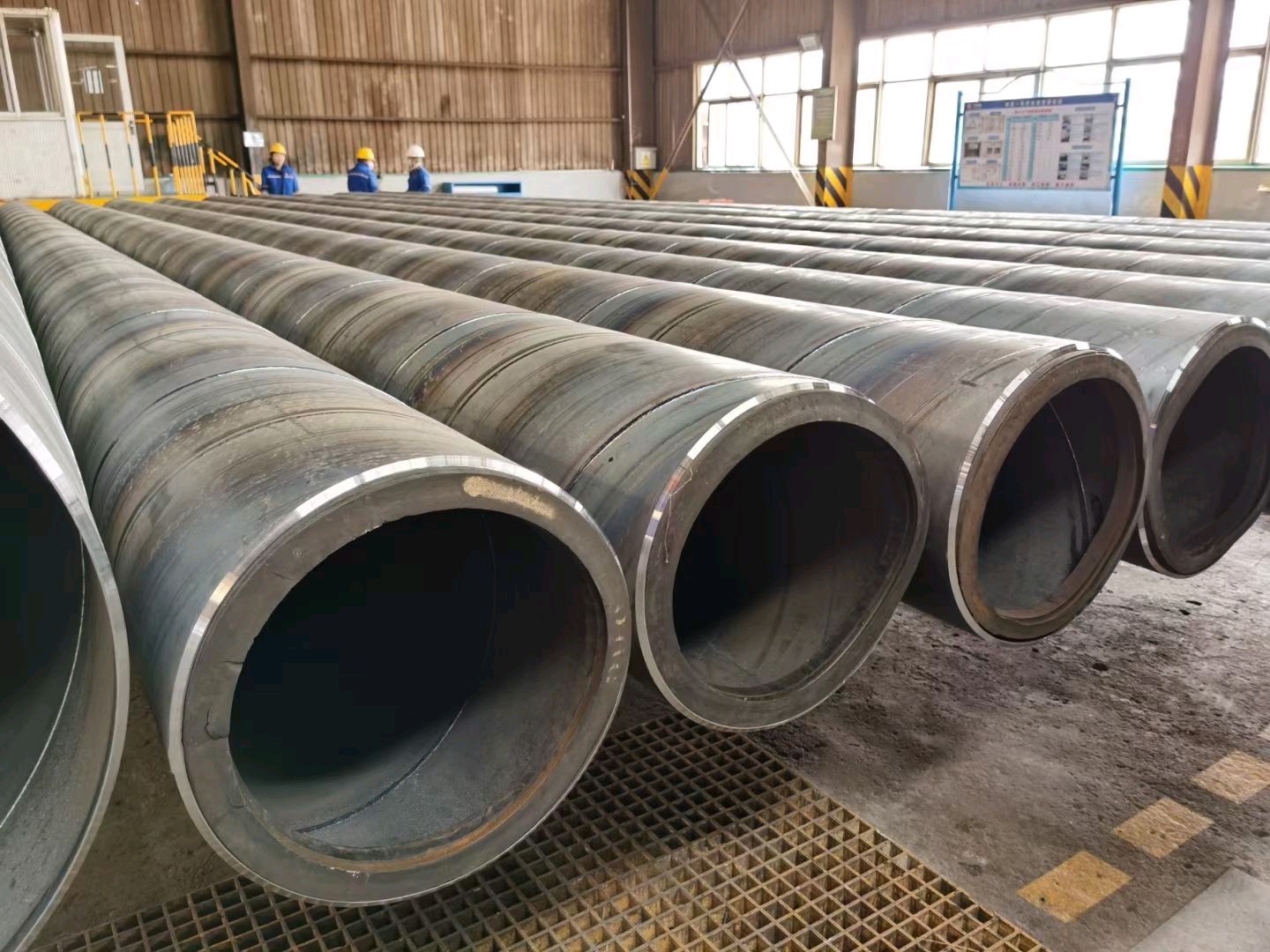Welded steel tube refers to a steel pipe with seams on the surface that is welded after bending and deforming a steel strip or steel plate into a circular, square or other shape. The blanks used for welded steel pipes are steel plates or strips. With the rapid development of continuous rolling production of high-quality strip steel and the advancement of welding and inspection technology, the quality of welds has been continuously improved, and the varieties and specifications of welded steel pipes have increased day by day, and seamless steel pipes have been replaced in more and more fields. Welded steel pipes have lower cost and higher production efficiency than seamless pipes.
The production process of welded steel pipe is to use various forming methods to roll steel plates, steel strips, etc. straightly or spirally into the required cross-sectional shape. Then, with the help of heating and pressure, different welding methods are used to weld the welds together to obtain steel pipes. Therefore, the defects of welded steel pipes are divided into two parts: steel plate base metal defects and weld defects.

1. Defects in the base metal of the steel plate
After rolling and other processes, most of the defects in the plate are flat and parallel to the surface; the main defects include delamination, inclusions, cracks, folding, etc., among which delamination is the most common internal defect. Delamination will produce various cracks. When the plate is subjected to tensile stress perpendicular to the surface, delamination will seriously affect the strength of the steel pipe. It is a defect that is not allowed to exist.
2 weld defects
Weld defects refer to defects generated in the weld during or after welding, and are divided into weld defects such as cracks, pores, slag inclusions, incomplete penetration, incomplete fusion, and undercuts. Dense pores and slag inclusions in the weld are dense three-dimensional defects, and cracks and incomplete fusion are planar defects, which are very harmful. Strip-shaped slag inclusions and incomplete penetration are strip-shaped defects, which are very harmful. Pores, small slag inclusions, etc. are point defects. Defects in the weld are more likely to cause problems such as strength and plasticity of the steel pipe, seriously affecting the quality of the steel pipe. The quality of welded steel pipes directly affects the safe operation and service life of oil and gas pipelines. Therefore, the flaw detection of welds is mainly aimed at dangerous defects such as cracks, pores, slag inclusions, incomplete penetration, and incomplete fusion in welds.
The production process of welded steel pipe is to use various forming methods to roll steel plates, steel strips, etc. straightly or spirally into the required cross-sectional shape. Then, with the help of heating and pressure, different welding methods are used to weld the welds together to obtain steel pipes. Therefore, the defects of welded steel pipes are divided into two parts: steel plate base metal defects and weld defects.

1. Defects in the base metal of the steel plate
After rolling and other processes, most of the defects in the plate are flat and parallel to the surface; the main defects include delamination, inclusions, cracks, folding, etc., among which delamination is the most common internal defect. Delamination will produce various cracks. When the plate is subjected to tensile stress perpendicular to the surface, delamination will seriously affect the strength of the steel pipe. It is a defect that is not allowed to exist.
2 weld defects
Weld defects refer to defects generated in the weld during or after welding, and are divided into weld defects such as cracks, pores, slag inclusions, incomplete penetration, incomplete fusion, and undercuts. Dense pores and slag inclusions in the weld are dense three-dimensional defects, and cracks and incomplete fusion are planar defects, which are very harmful. Strip-shaped slag inclusions and incomplete penetration are strip-shaped defects, which are very harmful. Pores, small slag inclusions, etc. are point defects. Defects in the weld are more likely to cause problems such as strength and plasticity of the steel pipe, seriously affecting the quality of the steel pipe. The quality of welded steel pipes directly affects the safe operation and service life of oil and gas pipelines. Therefore, the flaw detection of welds is mainly aimed at dangerous defects such as cracks, pores, slag inclusions, incomplete penetration, and incomplete fusion in welds.









